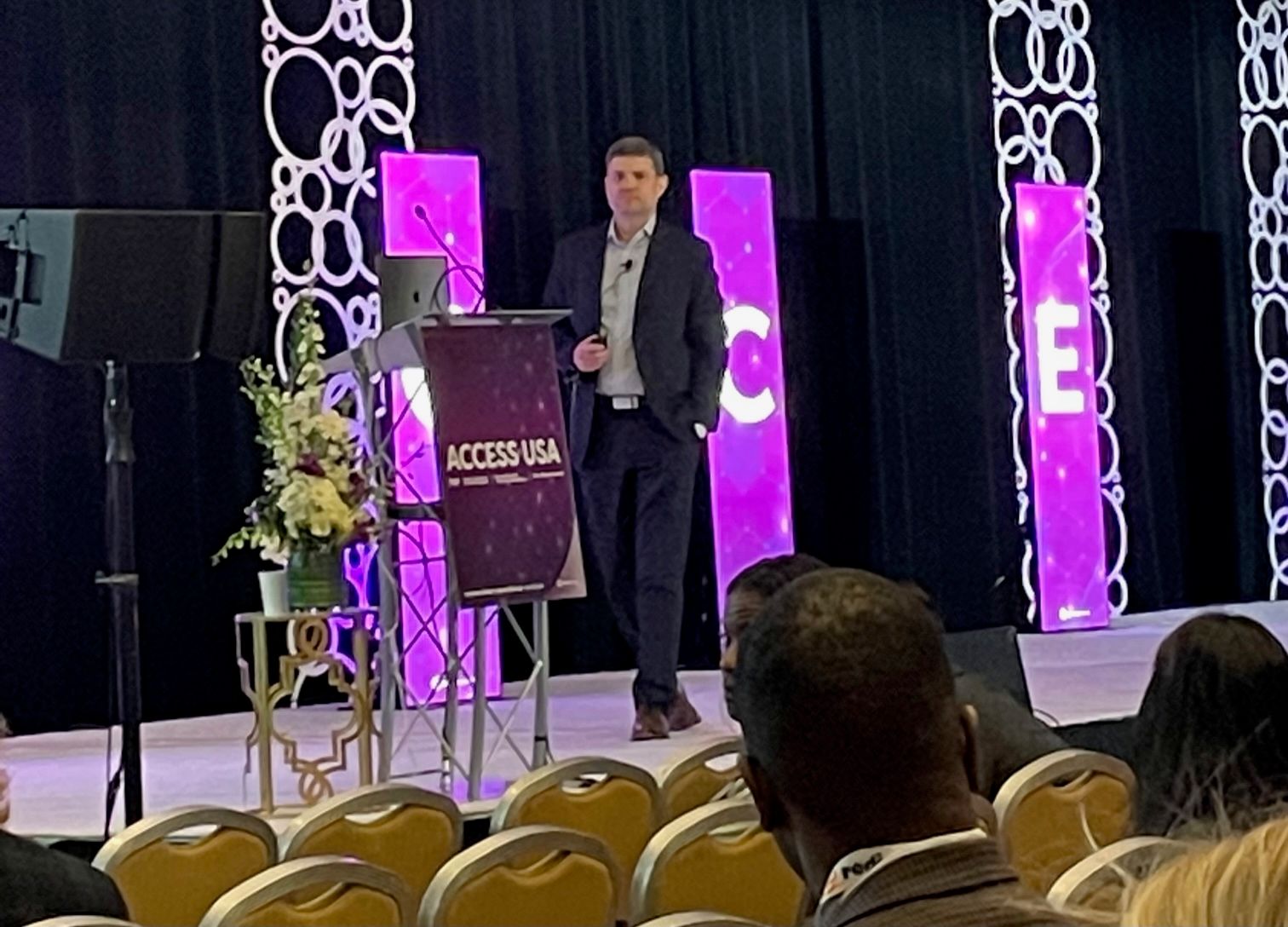Access USA 2024: The State of the Industry
Conference’s opening session addresses the evolving landscape of healthcare coverage and accessibility.

Day 1 of Informa’s Access USA Conference from Philadelphia—featuring Patient Assistance & Access Programs (PAP) and Hub and Specialty Models East—was led off by none other than Corey Ford, Cencora’s VP of reimbursement and policy insights.
Titled “State of the Industry—The Changing Landscape of Healthcare Coverage and Access,”1 the purpose of the Access USA general session was precisely what its title suggested, to offer insight on the evolving landscape (keeping regulations and insurance coverage in mind), along with taking a closer look at potential policies that can disrupt the patient access and affordability space.
Ford led off the session with an interactive poll asking what attendees’ most significant policy and payer challenges/priorities were. Results from the audience indicated that their focus lies in:
- Alternate funding plans (AFPs): 31%
- Copay accumulators and maximizers: 22%
- High patient out-of-pocket (OOP) costs: 17%
- Formulary exclusions by PBMs (pharmacy benefit managers): 14%
- Part D benefit design for the Inflation Reduction Act (IRA): 9%
- Utilization management: 5%
- Other: 2%
The core healthcare components of the IRA feature Part D reforms, inflationary caps, Medicare negotiation, biosimilars, and Affordable Care Act (ACA) subsidies. Thirty-one percent of the audience claimed being “somewhat ready” for IRA’s Part D benefit redesign that will be taking effect Jan. 1, 2025, which features what Ford describes as a true OOP cap of $2000 with a mechanism that will smooth these OOP costs over the course of the year; the coverage gap is also eliminated in this scenario.
“Certainly, in Medicare Part D, having a true out of pocket cap set at $2,000 is beneficial,” Ford told Pharmaceutical Commerce in a video interview last month.2 “But I think we have to think about the unintended consequences. There's going to be higher financial liability for manufacturers because of the benefit design. There could be greater and tighter formulary access issues and utilization management as a result of this. … It really comes down to that theme of pressure they're facing and how they think about adapting in this new environment.”
This voluntary smoothing is referred to as the Medicare Prescription Payment Plan. OOP costs for beneficiaries who enroll will be billed monthly, and they can sign up any point before or during the plan year. However, Ford reminded the audience that examples from the Centers for Medicare & Medicaid Services (CMS) can be quite confusing, and there is no point-of-sale enrollment option available in 2025.
The “Extra Help” program has also been expanded,3 and there is now a transition period to financial liability for select manufacturers.
In fact, concerning the latter, a Xcenda (part of Cencora) Managed Care Network Survey determined that 73% of participants support narrower formularies, especially outside of the protected classes; 93% support an increase in utilization management for specialty medications; 75% are looking to industry for additional rebates and price concessions; and 56% feel that Part D plan availability may be a concern for smaller Part D sponsors.
There are even shifts occurring this year that will impact 2025, including the fact that the total numbers of standalone prescription drug plans (PDPs) will see a 12% national decline on average across all states, and the availability of low-income subsidy plans will decline by 34%, while seeing only eight states have two options available.
Further, alternate funding plans/programs4 are being used by health plan sponsors to lower their costs, are driving patients to patient assistance programs, and despite recent regulatory developments, accumulators and maximizers continue saturating the commercial market.
When it came to prior authorization (PA), their prevalence has increased tremendously, as in the past five years alone, 84% of physicians have stated it has increased. This has averaged out to a 45% increase in the number of Part D drugs facing PA.
References
1. Ford C. State of the Industry—The Changing Landscape of Healthcare Coverage and Access. March 19, 2024. Access USA (general session). Philadelphia.
2. Tracy D. Cencora VP of Reimbursement & Policy Insights Discusses Implications of the Inflation Reduction Act. Pharmaceutical Commerce. February 28, 2024. Accessed March 19, 2024. https://www.pharmaceuticalcommerce.com/view/cencora-vp-of-reimbursement-policy-insights-discusses-implications-of-the-inflation-reduction-act
3. Niles A. A Look at the Medicare ‘Extra Help’ Program. Pharmaceutical Commerce. February 5, 2024. Accessed March 19, 2024. https://www.pharmaceuticalcommerce.com/view/a-look-at-the-medicare-extra-help-program
4. Hagan AL, Niles A. AFP Caution Flag for Patients. Pharmaceutical Commerce. August 7, 2023. Accessed March 19, 2024. https://www.pharmaceuticalcommerce.com/view/afp-caution-flag-for-patients